Garden Galleries
Ready to get inspired? Start here!

Fall Plant Selections
Fall is the best time to plant trees, shrubs, and other woody ornamentals. There is less shock to their roots and it allows them to recover during the cooler months before beginning leaf and shoot production in spring.
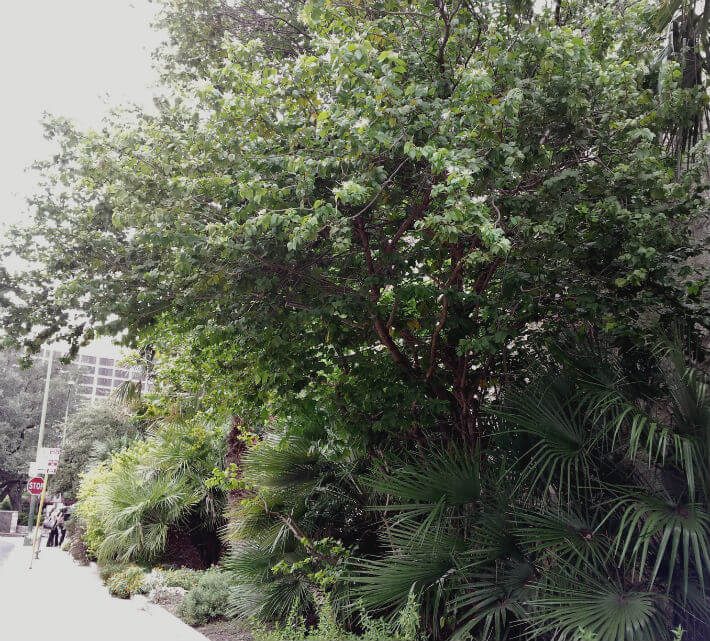
Anacacho Orchid Tree
The Anacacho orchid tree makes a gorgeous display with its silvery gray bark and fragrant white flowers that resemble orchids. It is a relatively rapid-growing tree after its first year when placed in a favorable location, but should be planted on the south side of buildings in areas with harsh winters.
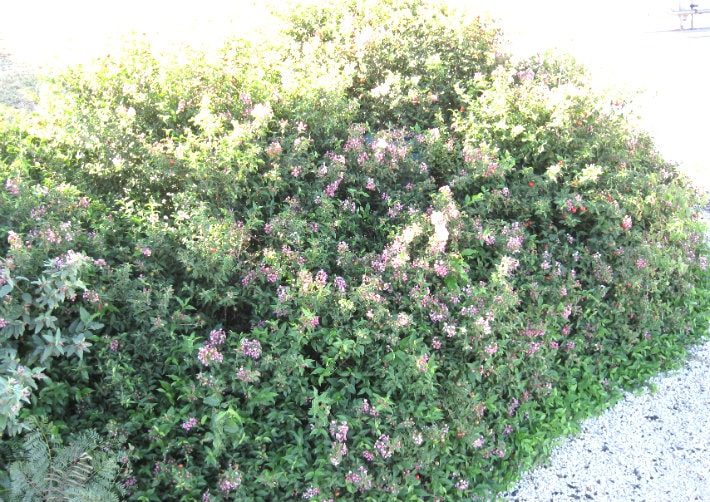
Barbados Cherry
Barbados Cherry develops into a thick, rounded canopy of fairly delicate foliage. Small pink flowers appear periodically from April to October and are followed about one month later by bright red, tart-tasting, 1-inch fruits which are high in vitamin C. It is useful as a dense screening hedge that may be left soft, sheared, or as a specimen.
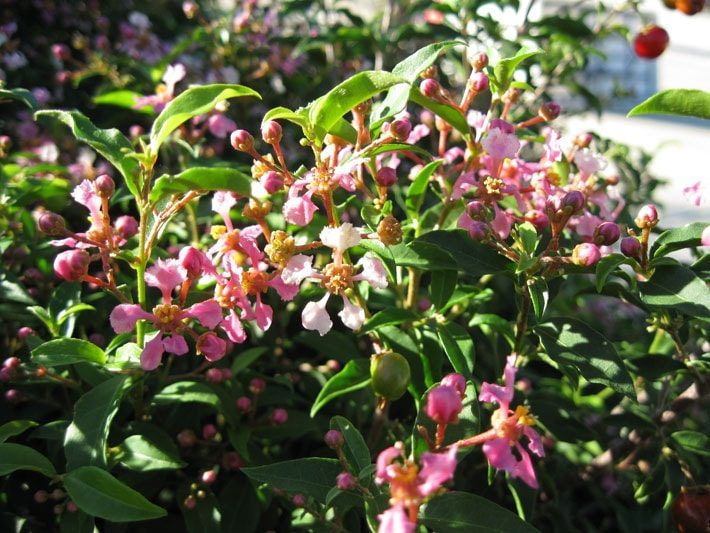
Barbados Cherry Flowers
Barbados cherry is an evergreen Texas native shrub or small tree with a soft rounded form that can be sheared or left as a specimen. It may drop its leaves in sub-freezing temperatures, but comes back each spring. Pink and yellow flowers (seen here) earn it the name 'wild crape myrtle.'
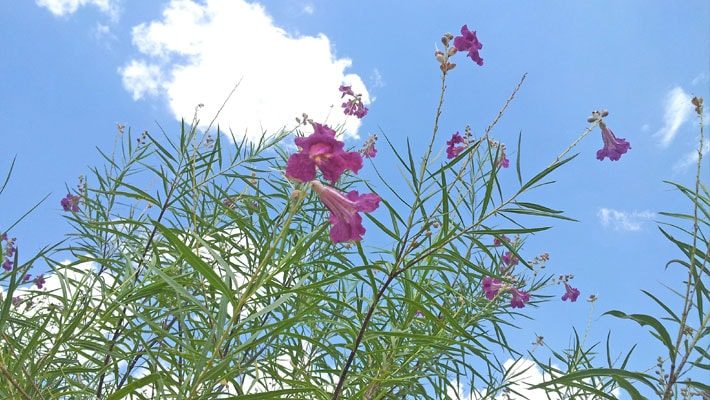
Bubba Desert Willow
The Paul Cox Bubba desert willow has narrow leaves and fragrant, pink tubular flowers throughout the warm season. This small tree is native to Texas and extremely drought tolerant. Be careful not to overwater, especially in winter.
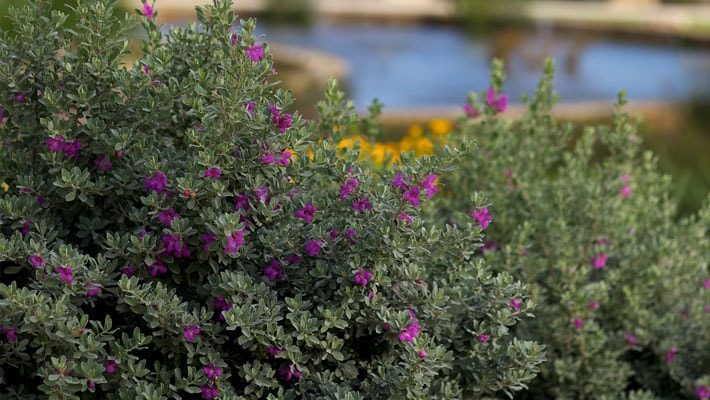
Cenizo
Cenizo, or Texas Sage, is a hardy and colorful denizen of any south Texas landscape. Bright pink blooms accent silver-gray leaves and provide food for honeybees.
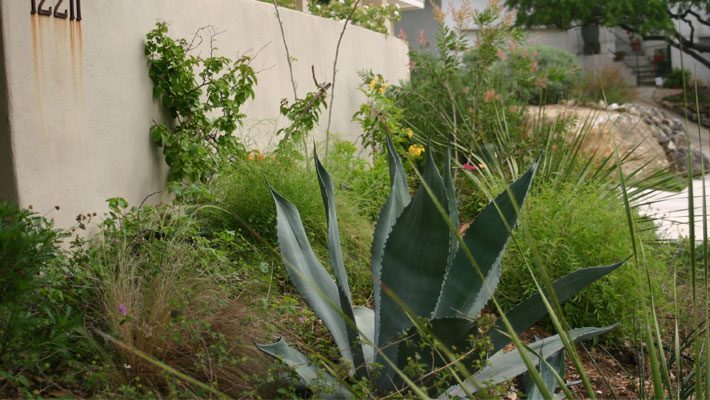
Century Agave with a Sotol
The majestic century agave is shown here as a baby with its silver skin and wicked thorns through the saw-toothed sotol in the foreground. Depending on which type of plant you select – yucca, agave or sotol – they may have sharp thorns on leaf tips or just a rough edge. This characteristic should be a major factor in plant placement in your yard.
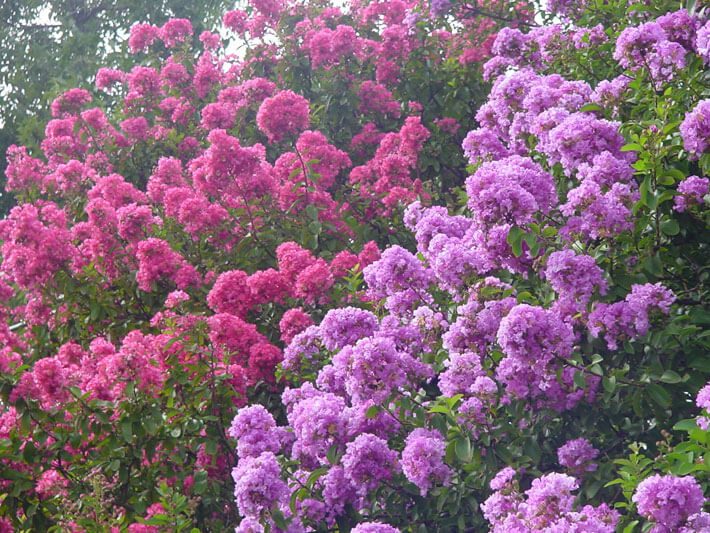
Crape Myrtle
This occasionally multi-trunked tree has smooth bark that peels over time to create a beautiful two-toned texture. It blooms prolifically all summer in various colors of white, red, pink and purple, but leaves turn red, yellow and orange after the blooming season to give it four seasons of interest
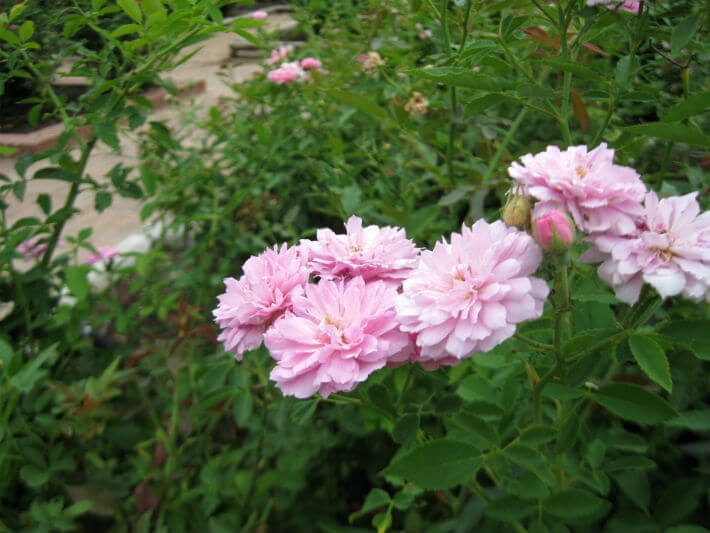
Earth-Kind® Caldwell Pink Rose
This rose has excellent disease and heat tolerance. It prefers well-drained, amended soil, but will tolerate alkaline clay soils. Caldwell Pink is very useful in the landscape as a border or hedge or for use as a specimen plant. Use it in drifts, masses, or as an accent.
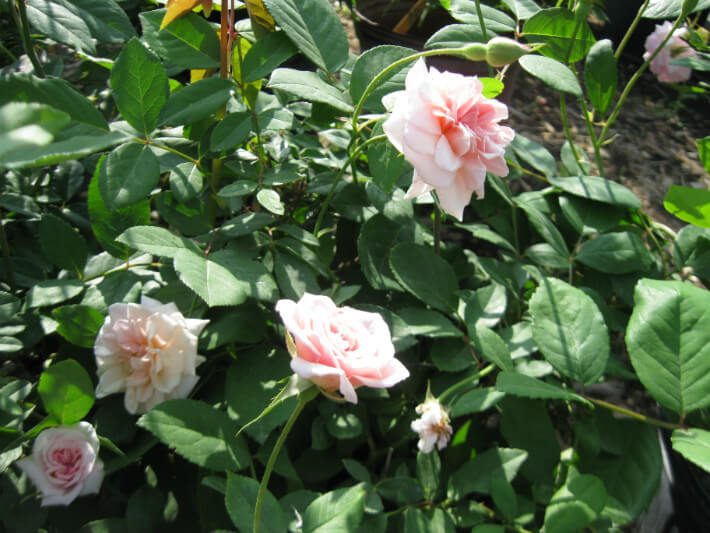
Earth-Kind® Cecile Brunner Rose
Cecile Brunner, also known as Mme. Cècile Brünner and The Sweetheart Rose, is a bush rose that grows to 4 feet. It blooms profusely in the spring and then continues to bloom until frost. Blossoms are a soft silvery pink and look like a hybrid tea in miniature. They appear in clusters and have a sweet fragrance. This is one of the best loved and easiest to grow rose varieties. Works very well as a mannerly specimen or as a mid-range plant in a rose bed, with drifts of annuals and/or perennials in front.
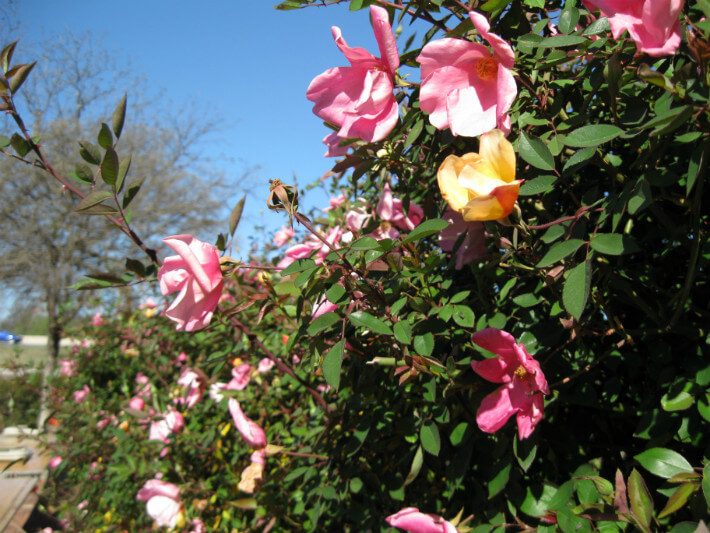
Earth-Kind® Mutabilis Rose
Mutabilis was introduced prior to 1894 and is one of the most famous and beloved of the old garden roses. Amazing medium sized single blossoms that pass through three distinct color phases (hence the name Mutabilis, since the blooms “mutate” in color) beginning with yellow, changing to pink, and finally to crimson. Mutabilis is a large, attractive shrub that is supremely easy to grow and has great heat tolerance, making it well suited for growing in the South. Be sure to give it plenty of room to grow. Can also be pruned to form a spectacular rose tree 8′ to 10′ in height.
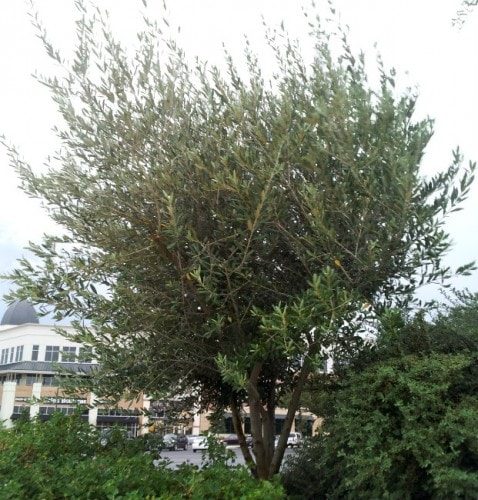
European Olive Tree
Dating back nearly 3,700 years, the European Olive Tree and its oil is the mainstay of the healthy Mediterranean diet. This tree is considered an evergreen tree, a flowering tree and an ornamental tree. It keeps its foliage year-round, blooms in a profusion of spring flowers and adds visual interest and beauty to landscaping.
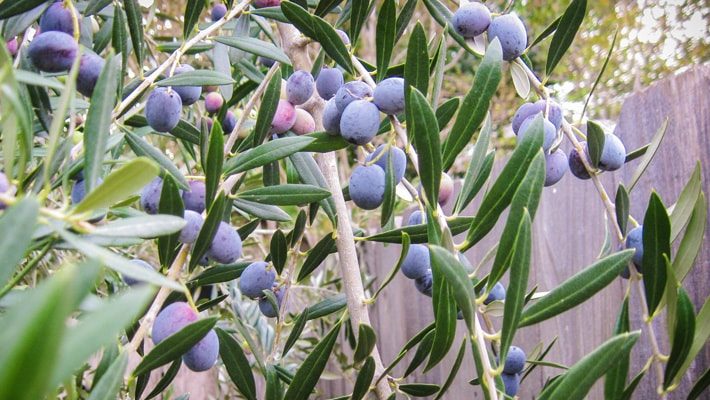
European Olive Tree
European olive trees take many many years to reach the stage where they provide fruit, but they are an aesthetically pleasing and drought-tolerant addition to any south Texas landscape.
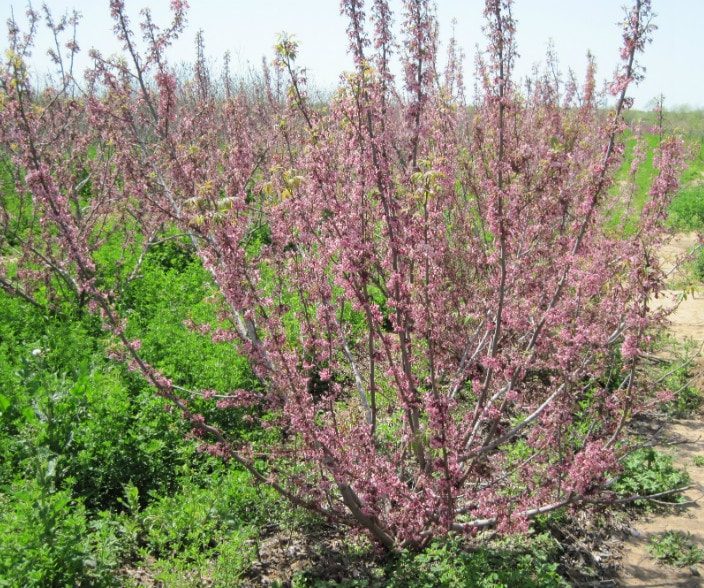
Mexican Buckeye Tree
Mexican-buckeye, an 8-12 ft., deciduous tree, can reach 30 ft. in height. It is often multi-trunked with light gray to brown bark, smooth on young branches, becoming fissured with age.
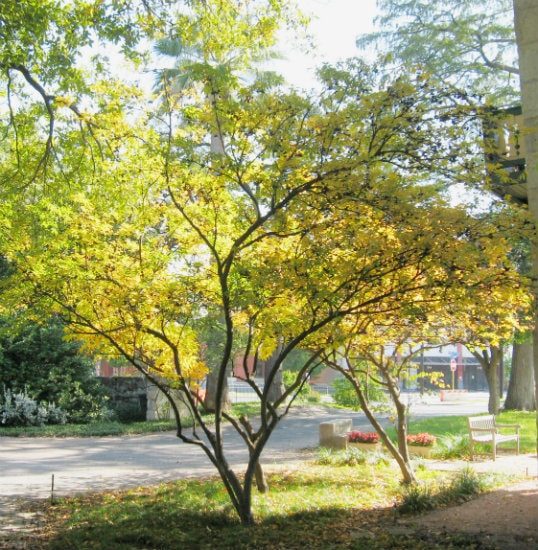
Mexican Buckeye in Fall Colors
In addition to being a drought-tolerant tree in the landscape, the Mexican Buckeye provides beautiful fall color.
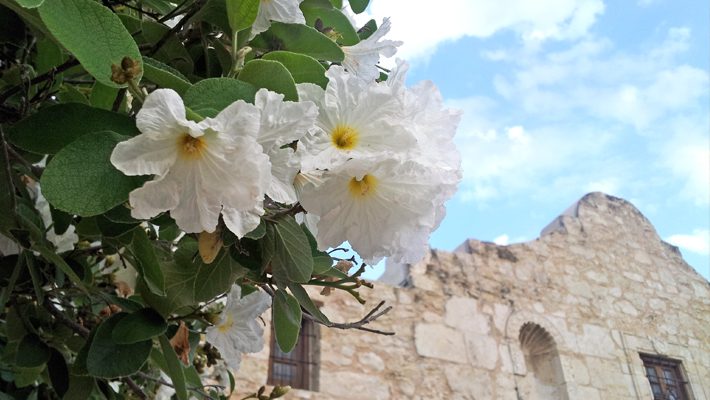
Mexican Olive Blooms
This tree grows to 30 feet and produces trumpet-shaped white flowers with yellow throats that are sometimes described as looking like crepe paper or chiffon. Birds, deer, and cattle enjoy the sweet one inch-long fruit and butterflies frequent the blooms.
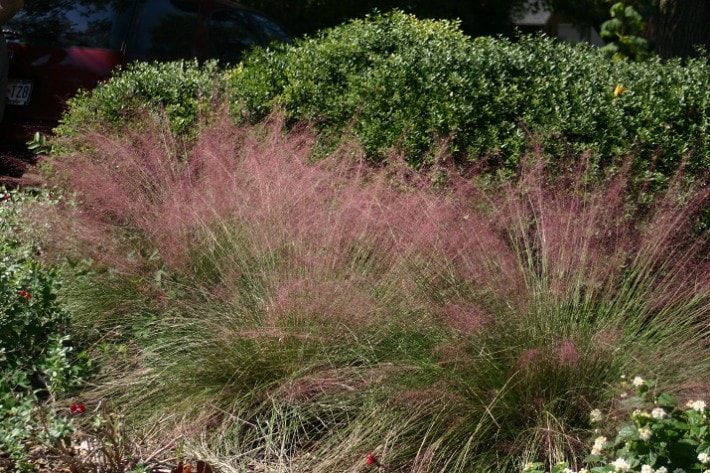
Muhly Grass
Muhly grasses are excellent, drought-tolerant additions to the landscape. There are many varieties of muhly grass including Lindheimer (pictured), gulf, and bamboo. They provide color and add a wavy appearance to any sunny flowerbed as they gently move with the breeze.
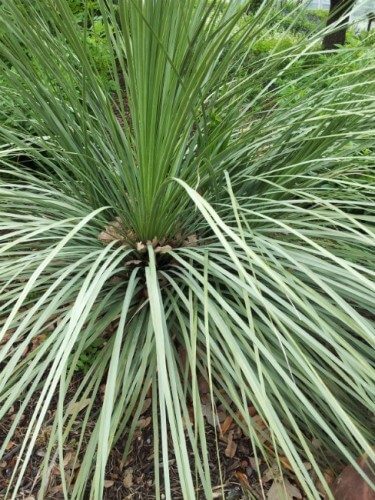
Nelson's Nolina
This extremely drought-tolerant plant is native to the deserts and montane regions in the State of Tamaulipas in northern/northeastern Mexico. It is known to be cold-hardy to at least 10 °F. Great for borders or central focus in a landscape bed.
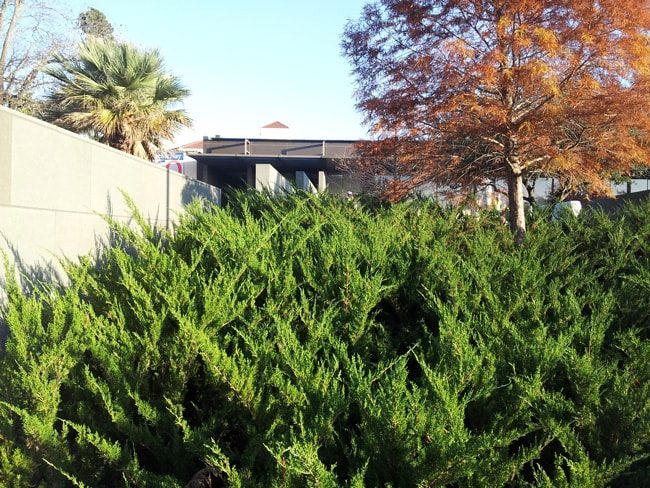
Ornamental Juniper
Ornamental Juniper can be used as a groundcover and provides a strong evergreen edge for this formal landscape.
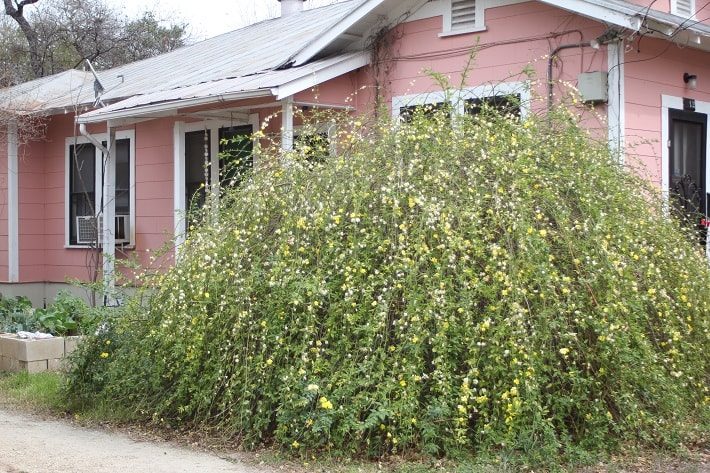
Primrose Jasmine
As you can see here, primrose jasmines can take up quite a bit of room and need no additional irrigation. For those of you with a big corner lot,hese are your friends.
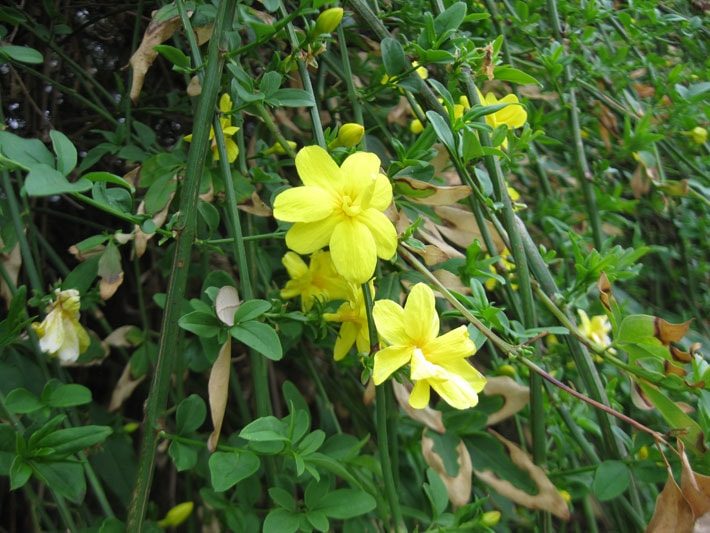
Primrose Jasmine bloom
You know spring is coming when you see these little, yellow darlings! While primrose jasmine only blooms profusely in early spring, it makes a tough, vigorous, evergreen shrub and screen the rest of the year. They’re great for creating privacy in backyards.
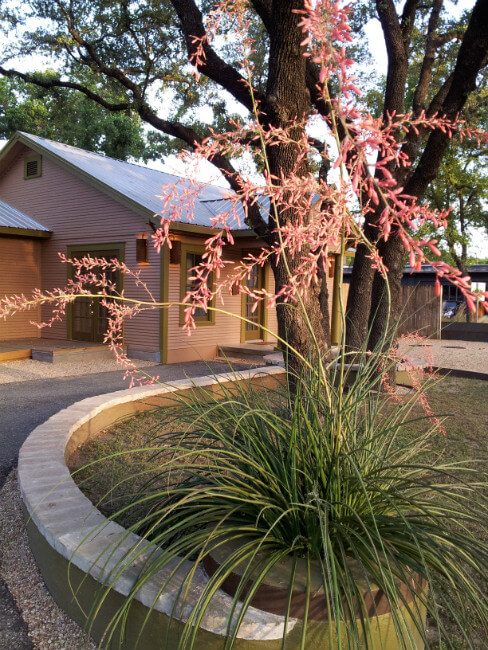
Red Yucca
The red yucca is a very common and popular landscape plant for San Antonio. Versatile as a landscape bedding plant or in medians and wildscape areas, the spikes of red blooms provide food for hummingbirds and a contrast to the dry colors of summer.
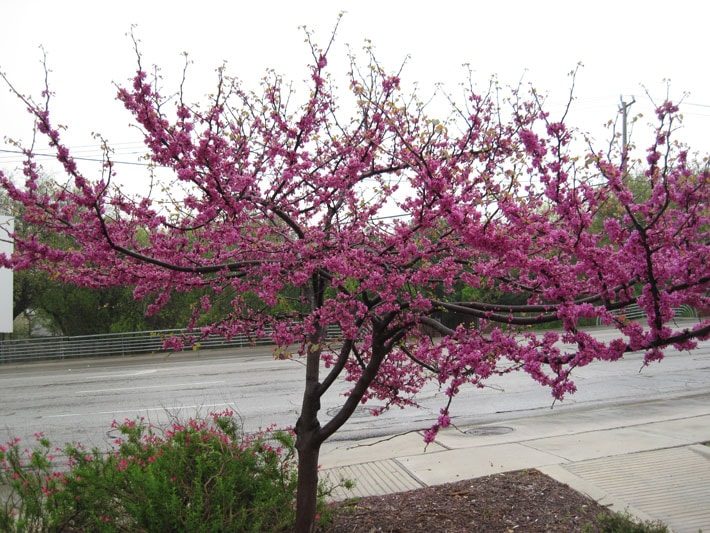
Redbud Blooms
Your neighbors will certainly have yard envy when they see one of these gorgeous redbuds in your yard! Bright, red-pink flowers coat this tree's branches starting in early March.
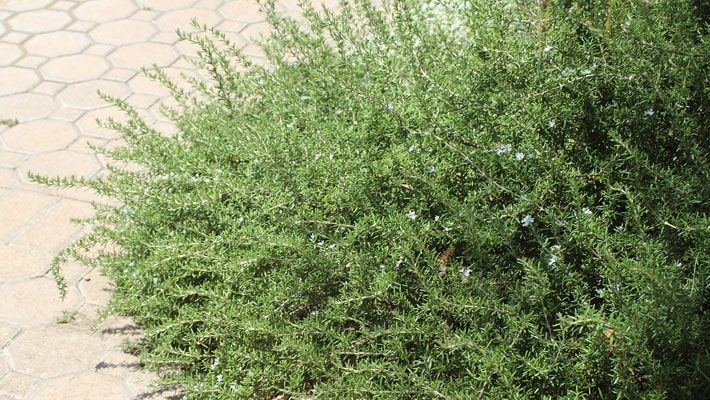
Rosemary Trailing Over the Walkway
Rosemary is a tough evergreen that it is sometimes used as a small foundation shrub. Trailing rosemary (pictured) cascades beautifully down retaining walls and rocky slopes or spills out over walkways and boasts lavender-blue flowers that bloom spring through fall.
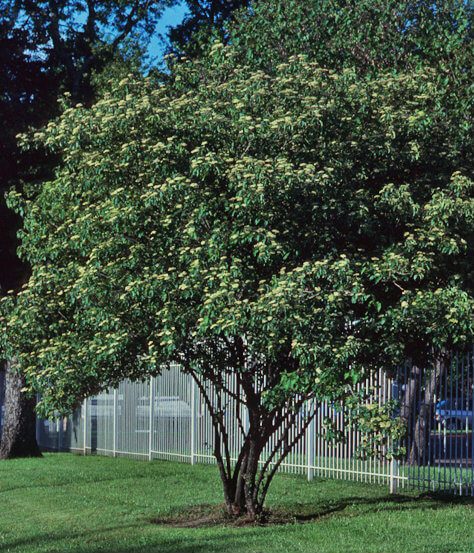
Roughleaf Dogwood Tree
Rough-leaf dogwood is a clumping shrub or small tree, reaching heights of 16 ft., with flat-topped clusters of creamy-yellow flowers and hard, white fruit on reddish brown or gray branchlets. The upper surface of the oval leaves is covered with rough hairs while the lower surface is softly pubescent.
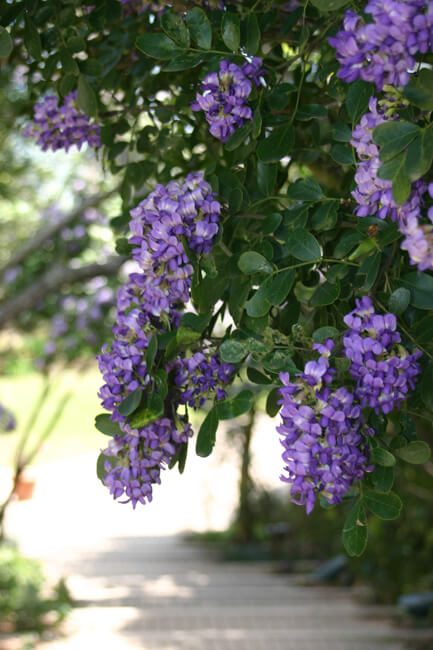
Texas Mountain Laurel
Most are familiar with the sweet, mouthwatering scent of the Texas Mountain Laurel bloom. It's one of the first trees of the year to flower and considered a harbinger of the spring season.
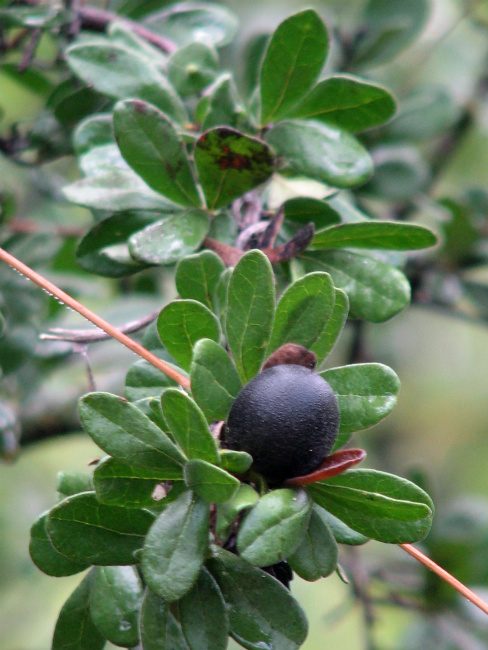
Texas Persimmon Tree
The Texas Persimmon's smooth, gray bark stands out in the landscape when planted in the shade of larger trees. These slow-growing denizens of south Texas provide cover and food for wildlife while being very resistant to drought.
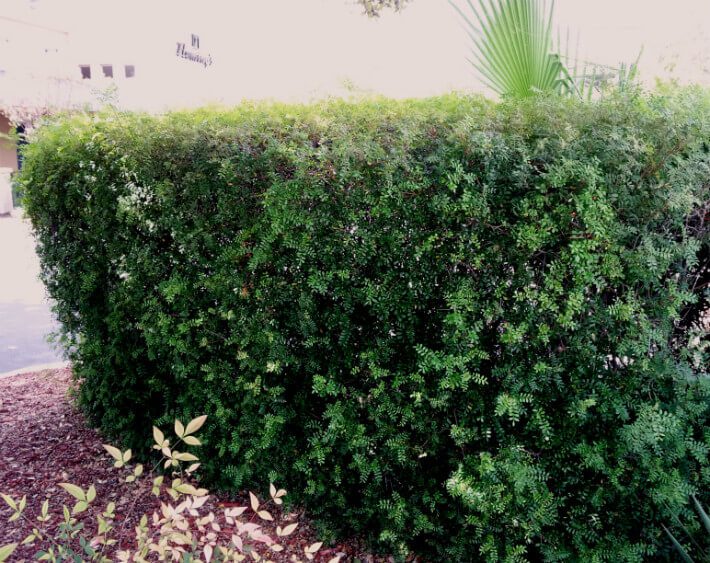
Texas Pistache Shrubbery
Although the Texas Pistache is normally grown as a tree, it can be carefully molded, pruned and shaped into an attractive shrub that provides fall color and bright red fruits.
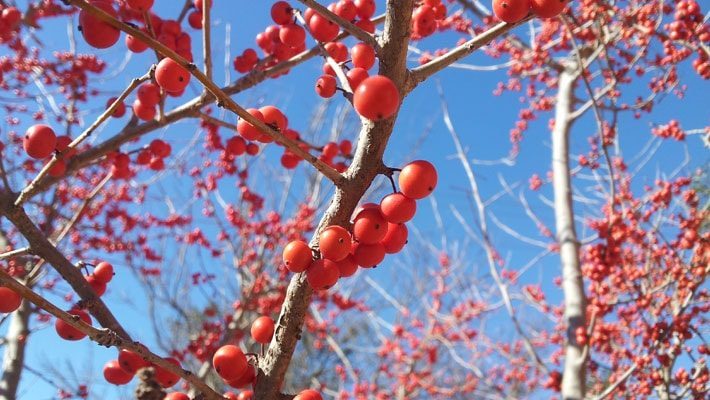
Texas Possumhaw
Possumhaw is a Texas native admired for its red fruit that is showcased in the winter when it drops its leaves. This large shrub needs some sun exposure to produce the berries that will attract fruit-eating birds to your landscape and provide color in the winter.
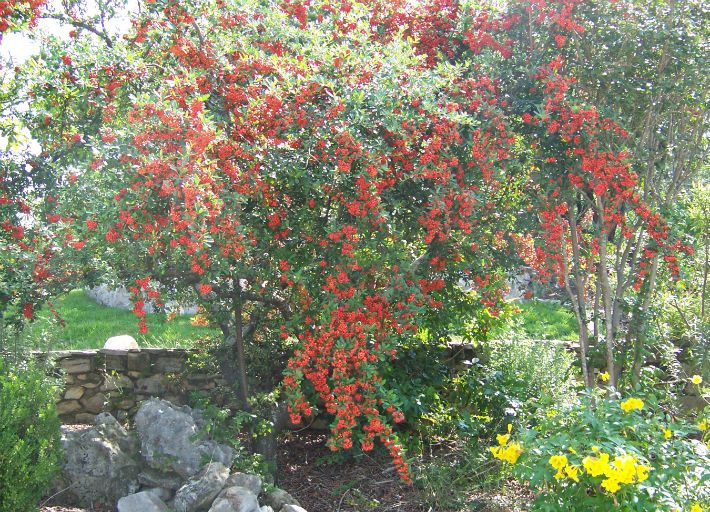
Texas Possumhaw
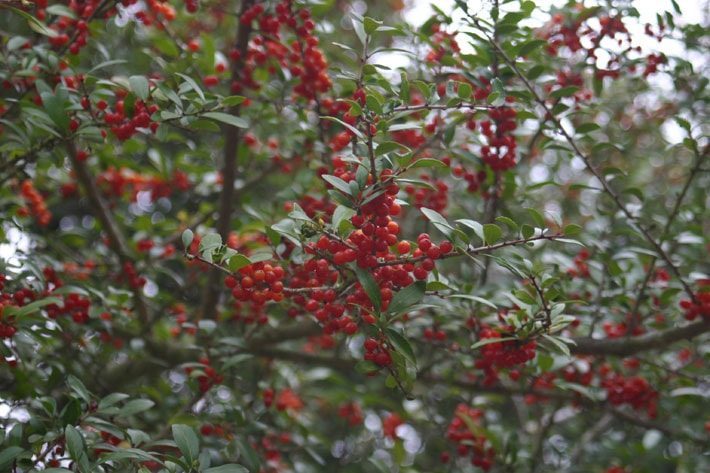
Yaupon Berries
Plants that sport winter berries, such as this yaupon holly, are a festive addition to a landscape and a must in any wildscape.
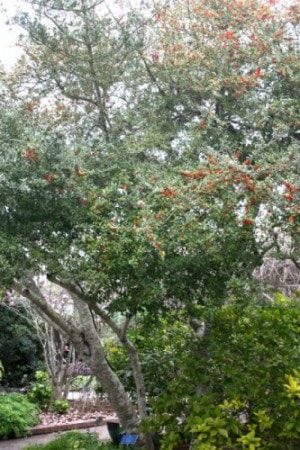
Yaupon Holly
Yaupon Holly is often grown in residential landscapes and trimmed into hedges. Yaupon is slow-growing and tends to get thick and twiggy on the inside, making it ideal for dense hedges but requiring careful pruning to shape it into a tree. You must have both a male and female plant to have berries.
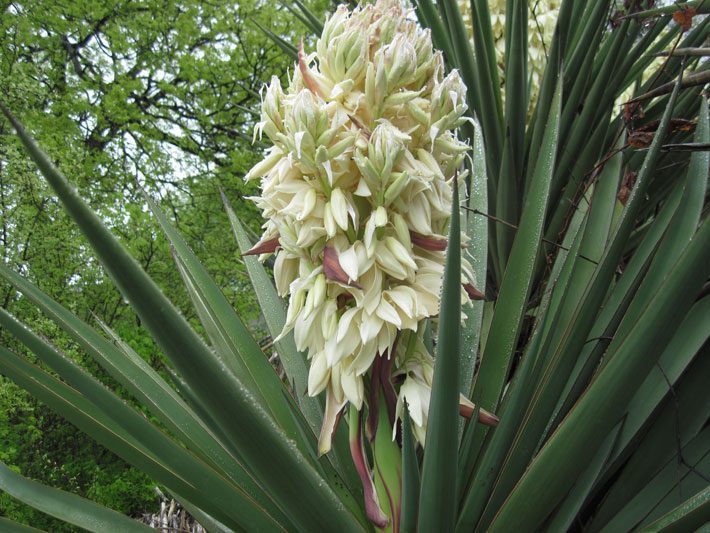
Yucca Blooms
Did you know that yuccas can only be pollinated by certain species of moths? These early spring bloomers don’t usually have an appealing fragrance, but they are amazingly tolerant of drought and rocky soils.



